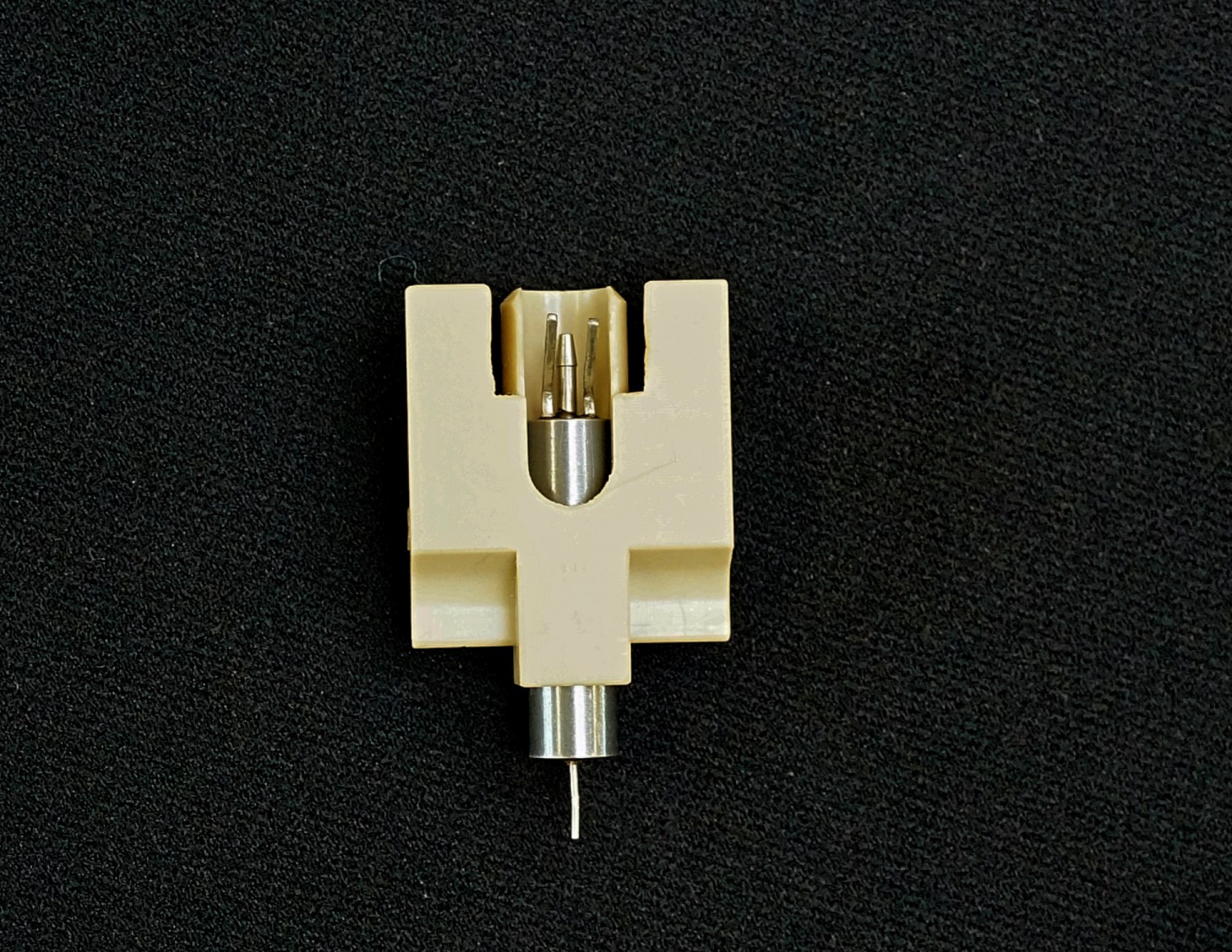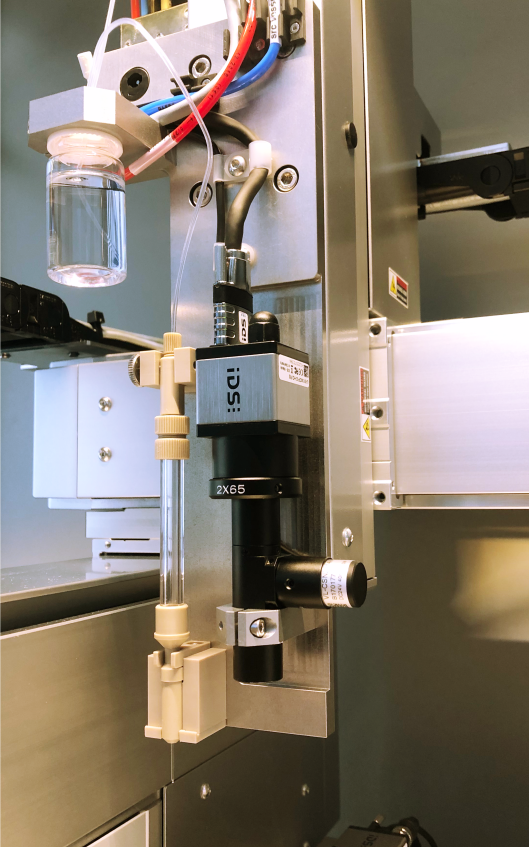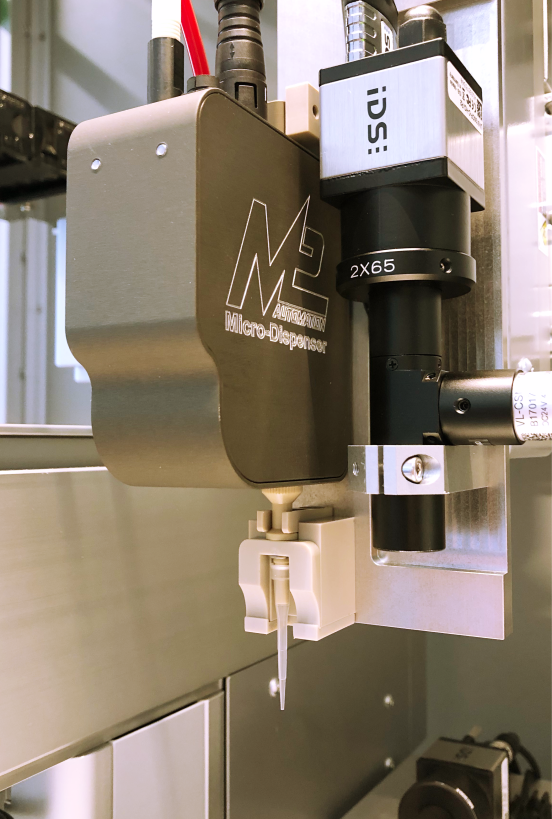NON-CONTACT DISPENSING
Non-contact dispensing is a newer method, which originally emerged from other technologies like photochemistry-based methods, laser writing, electrospray deposition, or inkjet technologies.
The technology is based on ejection of spotting sample from a microdispenser reservoir via an orifice. The liquid can be spotted as a droplet or a stream on the surface. There is no physical contact between the dispenser and the surface because the needle is usually placed 1-5 mm above the surface. The method is often used for smaller amounts of different samples and has a potential to increase microarray fabrication throughput.
Non-Contact printing with a disposable tip on different targetsThere are several possibilities, how the non-contact dispensing can be achieved: by piezoelectric dispensing, valve jet or ink-jet printing; the basis is repeated change of pressure on valves or capillaries. These two factors determine the velocity and final volume of the droplet. In case of a valve dispenser, the droplet is ejected by a computer-controlled opening and closing of the valve, while the reservoir is under continuous high pressure.
 Solenoid Microdispenser (SDMD)
Solenoid Microdispenser (SDMD) Another possibility is the dispensers equipped with a piezo actuator. Piezo actuator is a device, that features high displacement accuracy, high response speed and high force generation, is very durable, in the endurance tests ran through several billion cycles without any measurable changes in its behaviour. The piezoelectric actuator causes a volumetric change in sample reservoir. The abrupt pressure changes lead to the droplet ejection. At M2, we use piezo driven pulses on a glass capillary, these piezo driven microdispensers are made of inert glass, with different sizes and different orifices.
 Piezo-Driven Microdispenser (PDMD-bulk)
Piezo-Driven Microdispenser (PDMD-bulk) Alternatively, there can be used dispensers where the droplets are ejected by a preassure waves created by a shock wave generator.
 M2-Microdispenser (M2MD)
M2-Microdispenser (M2MD) The main advantage of non-contact dispensing is delivery of homogenous droplets with the same, known, and reproducible volume. Surface structures don’t have any impact on the deposited volume. The spotting can be performed on different targets, let’s name just the most common - glass slides, nitrocellulose, microtiter plates, microelectrodes, optical structures, nano-wells, microcantilevers or into microfluidic channels, even difficult substances can be spotted, from DNA samples, protein, glycans cells and cell lysates or viscous samples. The source plate and substrate holder can be cooled or heated if needed. The spot size depends on the surface, on its tension and properties of the sample (high, low viscosity, hydrophilic or hydrophobic solutions, volatility, etc.). In case of missing a spot during printing, the spot can be easily respotted. The missing spot is found by an inline quality control and the repair function software offers the possibility to decide if spot should or shouldn’t be respotted or repaired for making perfect microarrays. The pattern can be very flexible, printing fast due to avoiding of sample refilling. Therefore, the method is very efficient for production of multi-analyte, microarray diagnostic assays.
Flexible pattern printed by PDMDAnother big advantage of non-contact spotting is lower possibility of contamination, the eventual contamination can happen only while splashing of the sample, or by happening satellite droplets. These both issues can cause irregular spot sizes. These issues can be removed by controlling the droplet speed and volume.
The dispensers have longer shelf life, in case of damage can be repaired, are optimised for many liquids and biological samples. M2 dispensers are mostly working without any coating for many years, and if there is a very difficult sample, there is available a coating kit.
